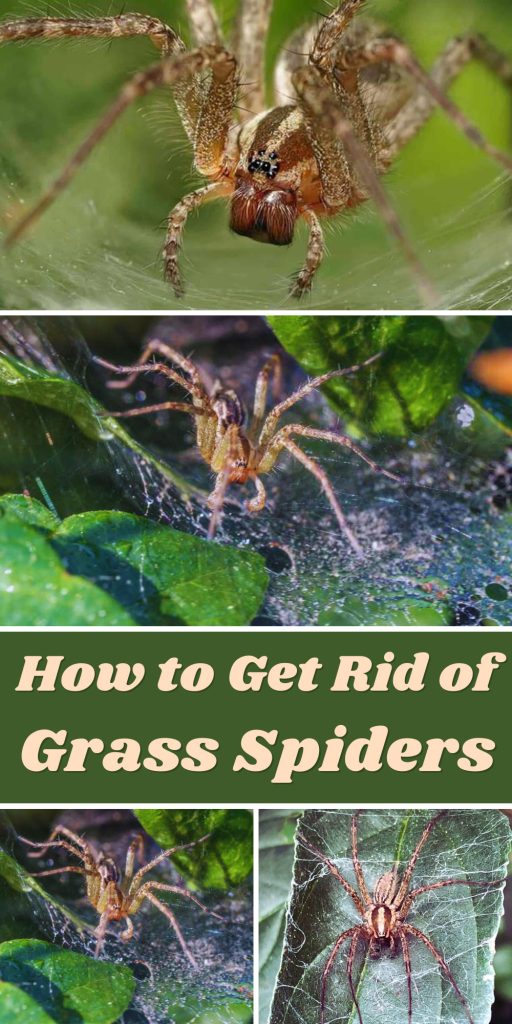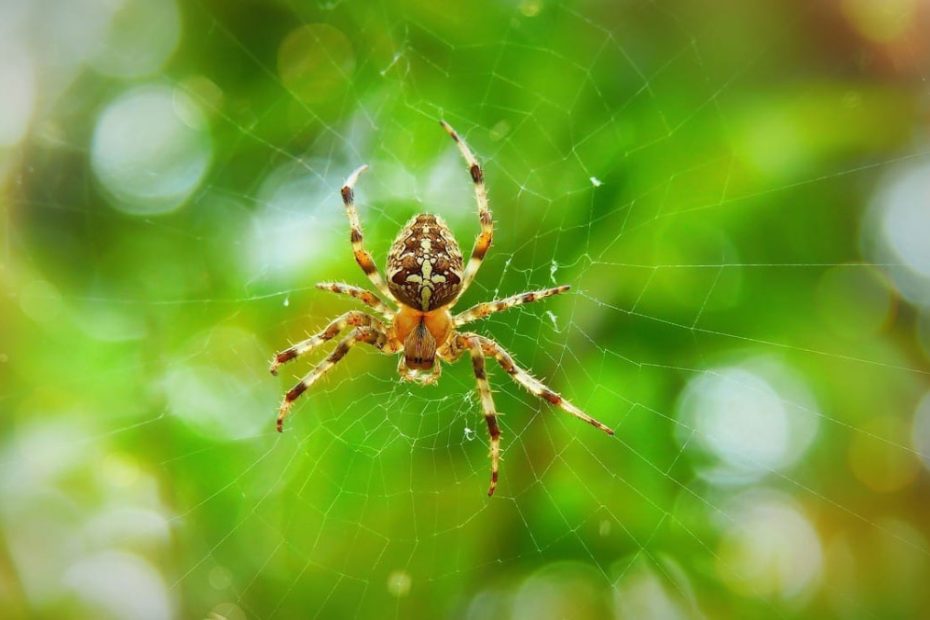Grass spiders can turn your peaceful lawn into a web-filled nightmare. These tiny yet intimidating creatures love to build their funnel-shaped webs in grassy areas, making your yard look unkempt and potentially causing anxiety for those who fear spiders. While they play a role in controlling pests, having too many around can be unsettling.
You don’t have to tolerate their presence. With a few strategic steps, you can reclaim your yard and enjoy a spider-free environment. In this guide, we’ll walk you through effective methods to get rid of grass spiders, ensuring your outdoor spaces remain inviting and comfortable.
Key Takeaways
- Identify Grass Spiders: Learn the unique traits of grass spiders, including their funnel-shaped webs, light to dark brown coloring, and long legs with stripes, to accurately identify and target them.
- Lawn Maintenance: Regularly mow, water properly, remove thatch, and fertilize your lawn to create an environment less hospitable to grass spiders.
- Reduce Outdoor Clutter: Clear debris, store items properly, trim dense vegetation, and manage firewood to minimize the habitats that attract grass spiders.
- Seal Entry Points: Inspect and seal cracks, install door sweeps, repair window screens, and cover vents and chimneys to prevent spiders from entering your home.
- Effective Removal Techniques: Use natural remedies like essential oils and diatomaceous earth, or opt for chemical solutions and professional pest control for targeted spider removal.
- Safety Precautions: Handle chemicals with care, use protective gear, keep treated areas secure from pets and children, and follow proper disposal methods to ensure household safety.

Understanding Grass Spiders
Grass spiders, known for their distinctive funnel-shaped webs, often inhabit lawns and gardens. These spiders, while beneficial for pest control, can cause discomfort due to their presence.
Identifying Grass Spiders
To accurately identify grass spiders, observe the following characteristics:
- Scientific Name: Agelenopsis
- Color: Light to dark brown
- Legs: Long, with noticeable stripes
- Webs: Funnel-shaped, often found close to the ground
Grass spiders typically feature two prominent spinnerets at the end of their abdomens, used to create their intricate webs.
Common Habitats and Behaviors
Grass spiders prefer environments offering ample cover and insect prey. Their common habitats include:
- Lawns: Dense grass provides ideal conditions.
- Gardens: Shrubs and plants offer both cover and food sources.
- Yard Debris: Piles of leaves or wood attract these spiders.
Behaviorally, grass spiders are:
- Nocturnal: Active primarily during the night.
- Skittish: Quick to retreat when threatened.
- Hunters: Use web vibrations to detect prey.
To effectively control and eliminate grass spiders, understanding their habits and environments is crucial.
Prevention Methods
To keep grass spiders at bay, employing prevention methods is key. Effective prevention helps maintain a spider-free environment.
Maintaining Lawn Health
Healthy lawns discourage grass spiders from settling. Regular maintenance is essential.
Steps for Lawn Care:
- Mow Regularly: Keep your grass trimmed to around 2-3 inches to reduce harboring spots.
- Water Properly: Water your lawn deeply but infrequently. This avoids over-saturation, which can attract insects and spiders.
- Remove Thatch: Thatch buildup can create hiding spots. Rake and aerate lawns annually to keep thatch under control.
- Fertilize Correctly: Use appropriate fertilizers to promote healthy grass and discourage pest attraction.
Reducing Outdoor Clutter
Cluttered yards provide ideal habitats for grass spiders. Clearing these areas makes your yard less inviting.
Steps to Reduce Clutter:
- Clear Debris: Remove leaves, wood piles, and other yard waste. These materials can create hiding spots for spiders.
- Store Items Properly: Keep outdoor items like gardening tools or toys neatly stored in sheds or containers.
- Minimize Dense Vegetation: Trim bushes and shrubs regularly to prevent spiders from building webs in dense foliage.
- Monitor Firewood: Store firewood away from your home and off the ground to reduce spider harborage.
Sealing Entry Points
Preventing spiders from entering your home is crucial.
Steps to Seal Entry Points:
- Inspect and Seal Cracks: Examine your home’s exterior for cracks or openings and seal them with caulk or weatherstripping.
- Install Door Sweeps: Attach door sweeps to the bottom of doors to block gaps where spiders can enter.
- Repair Window Screens: Fix or replace damaged window and door screens to prevent spiders from infiltrating.
- Check Vents and Chimneys: Cover vents and chimneys with fine mesh to keep spiders out.
By maintaining lawn health, reducing outdoor clutter, and sealing entry points, you can substantially decrease the likelihood of grass spiders invading your surroundings.
Removal Techniques
Implementing targeted removal techniques can help tackle grass spider infestations. These methods cover natural remedies, chemical solutions, and engaging professional pest control services to effectively manage and prevent future occurrences.
Natural Remedies
Consider natural remedies if you prefer environmentally friendly solutions. These methods remove grass spiders without harmful chemicals.
- Essential Oils: Mix peppermint or tea tree oil with water and spray around areas where spiders are prevalent. Essential oils disrupt spiders’ senses.
- Diatomaceous Earth: Sprinkle diatomaceous earth around lawns and garden edges. This natural powder dehydrates and kills spiders upon contact.
- Vinegar Solution: Combine equal parts of water and white vinegar in a spray bottle and apply in areas prone to spider webs. Vinegar’s acidity repels spiders.
- Citrus Peels: Place citrus peels around your yard and home. Citrus scents are known to deter spiders.
Chemical Solutions
Chemical solutions offer a more immediate and potent approach to eradicating grass spiders. Always follow safety instructions and local regulations when using pesticides.
- Insecticides: Apply insecticides specifically formulated for spiders. These contain active ingredients like bifenthrin or deltamethrin that target spiders.
- Aerosol Sprays: Use aerosol sprays to directly treat visible webs and spiders. These products deliver quick results for small infestations.
- Residual Sprays: Spray residual insecticides along the perimeter of your yard and home. Residuals provide long-lasting protection and prevent spiders from entering.
Professional Pest Control
Engage professional pest control services if natural and chemical methods prove insufficient. Professionals offer expertise and advanced solutions.
- Inspection: Professionals conduct thorough inspections to identify the extent of the infestation and potential entry points.
- Customized Treatment Plans: Pest control experts develop tailored treatment plans using a combination of methods for effective spider management.
- Regular Maintenance: Schedule regular pest control services to keep your property spider-free. Maintenance ensures long-term prevention and immediate action if re-infestation occurs.
Apply these removal techniques consistently to create a safer, more comfortable outdoor environment.
Safety Precautions
Ensuring your safety and that of your household is crucial when dealing with grass spider infestations. Follow these guidelines to handle chemicals properly and protect pets and children.
Proper Handling of Chemicals
Handling chemicals requires care to avoid health risks. Here are important steps to ensure safe chemical use:
- Read Labels Carefully: Always read product labels to understand usage instructions and safety precautions.
- Wear Protective Gear: Use gloves, goggles, and masks to protect your skin, eyes, and respiratory system.
- Ventilation: Apply chemicals in well-ventilated areas to avoid inhaling fumes.
- Storage: Store chemicals in their original containers, away from food, drinks, and out of reach of children and pets.
- Disposal: Follow local guidelines for disposing of chemical containers to minimize environmental impact.
Protecting Pets and Children
Pets and children are particularly vulnerable to the effects of chemicals. Keep them safe by following these steps:
- Secure Areas: Keep pets and children away from treated areas until chemicals have dried completely.
- Non-Toxic Alternatives: Consider using non-toxic alternatives, such as essential oils or vinegar solutions, to reduce risks.
- Educate Family Members: Inform all household members about the treatment plan and safety precautions.
- Emergency Information: Keep emergency contact information for poison control centers readily accessible in case of accidental exposure.
By adhering to these safety precautions, you can effectively manage grass spider infestations while protecting your household.
Conclusion
Dealing with grass spiders doesnât have to be overwhelming. By understanding their habits and habitats, you can take proactive steps to keep them at bay. Regular lawn maintenance and reducing outdoor clutter are key to prevention. Sealing entry points helps protect your home, while natural and chemical solutions offer targeted removal options.
If you find these methods insufficient, professional pest control services can provide a comprehensive approach. Remember to always prioritize safety when handling chemicals and ensure your family and pets are protected. With these strategies, you can enjoy a spider-free outdoor space and peace of mind.
Frequently Asked Questions
What are grass spiders known for?
Grass spiders, scientifically known as Agelenopsis, are known for their distinctive funnel-shaped webs and their role in controlling pests in lawns and gardens.
How can I identify a grass spider?
Grass spiders can be identified by their long, striped legs, color variations, and their funnel-shaped webs.
Where do grass spiders prefer to live?
Grass spiders prefer dense lawns, gardens, and areas with yard debris. They commonly inhabit places with plenty of hiding spots and cover.
Are grass spiders dangerous to humans?
Grass spiders are generally not dangerous to humans. They are skittish and prefer to avoid human contact, and their bites are rare and typically non-threatening.
What are natural remedies to deter grass spiders?
Natural remedies include using essential oils, diatomaceous earth, vinegar solutions, and citrus peels to repel grass spiders without harmful chemicals.
Can chemical solutions effectively eliminate grass spiders?
Yes, chemical solutions like insecticides, aerosol sprays, and residual sprays can effectively eliminate grass spiders. It’s important to follow safety instructions when using these products.
What are some preventive measures to avoid grass spider infestations?
Preventive measures include regular lawn maintenance, removing yard debris, storing items properly, minimizing dense vegetation, and sealing entry points to your home.
Is professional pest control necessary for grass spider infestations?
If natural remedies and chemical solutions are insufficient, professional pest control services may be necessary. They offer thorough inspections, customized treatment plans, and regular maintenance.
How should I handle chemicals safely when dealing with grass spiders?
When handling chemicals, read labels, wear protective gear, ensure proper ventilation, and follow safe storage and disposal practices to protect yourself and your household.
How can I protect pets and children from grass spider treatments?
Protect pets and children by securing treated areas, using non-toxic alternatives when possible, educating family members on safety measures, and keeping emergency contact information for poison control accessible.
